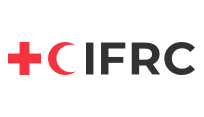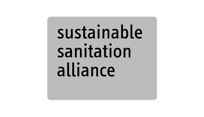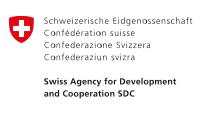Depending on the type of treatment of organic waste, the resulting products, such as compost, vermicompost, digestate or frass, can be applied to public or private land or to pots for agriculture, gardening or landscaping.

Organic wastes that have been treated by composting T.1, vermicomposting T.2, anaerobic digestion T.3 or black soldier fly treatment T.4 can be used as a soil conditioner/fertiliser in agriculture, home gardening, forestry, sod and turf growing, landscaping, public spaces/parks, land reclamation, as a landfill cover material, or for erosion control. Although these treated waste products have lower nutrient levels of nitrogen, phosphorus and potassium per mass unit than commercial chemical fertilisers they can replace some part of the fertilisers needed. More importantly, however, when applied to soil and crops they have additional properties to fertilisers, such as carbon supply to soil and carbon sequestration, increased water retention properties, suppression of soil pathogens and plant diseases and a slow, steady release of nutrients.
Design Considerations
These organic waste-derived products are either spread on the surface of the ground, mixed into the soil before planting or used as a mulch around plants. Spreading over the soil surface, around plants or across entire fields improves soil fertility, water retention and erosion control. Incorporating the products into the soil improves soil structure and nutrient content. Mulching is typically used to retain moisture and suppress weeds; its slow incorporation into the soil eventually enriches it with nutrients.
Materials
Using these treated organic waste products involves transporting the products to the fields by hand or motorised vehicle and then using shovels, rakes and manual labour to apply the products onto or into the soil. Digestate can have a higher water content, resulting in a slurry-like product that requires tanker trucks with pumps and pipes for spreading onto the fields. Personal Protective Equipment (PPE) is required X.4.
Applicability
The use of treated organic waste is applicable in all phases of humanitarian aid, although agricultural activities are less likely during an acute response. Use is applicable to all scales of agriculture and farming. It is also applicable for household-level agricultural activities such as small gardens, backyards or even pot plants; or at a commercial level for forestry, landscaping, public areas/parks and even as a landfill cover material. Application in commercial or institutional situations is, however, more likely in protracted crisis and development situations.
Operation and Maintenance
Spreading equipment must be maintained to ensure continued use. Application rates and usage should account for the concentration of nutrients in the products so that they are used at a sustainable and agronomic rate. Compost typically has a balanced but relatively low nutrient content compared to chemical fertilisers, providing nitrogen (N), phosphorus (P), and potassium (K), along with micronutrients. The nutrient release is slow, making it a long-term soil amendment. Vermicompost is richer in nutrients than regular compost, especially in nitrogen, phosphorus, potassium, and micronutrients like calcium and magnesium. It also contains plant growth-promoting hormones and enzymes. Anaerobic Digestate is typically rich in readily available nitrogen, phosphorus, and potassium, with a higher concentration of nutrients than compost. Finally, frass (such as from black soldier fly larvae) is rich in nitrogen, phosphorus, and potassium, often with a balanced NPK ratio. It also contains chitin, a natural compound found in insect exoskeletons that can boost plant immunity and stimulate beneficial microbial activity. Frass has a fine, powdery texture and can act as a natural pesticide due to the presence of chitin.
Health and Safety
All treatment products derived from organic waste, especially if improperly processed, may contain harmful pathogens like E. coli, Salmonella, and Listeria, depending on the source material used. These can pose risks to human health if users handle the products without protection. Compost can harbour fungi such as Aspergillus, which produces spores that can cause respiratory issues, particularly for individuals with compromised immune systems or pre-existing respiratory conditions. If the products are very dry, the application can create dust that could be inhaled, causing respiratory irritation or allergic reactions. Lightly moistening the product before handling can help reduce dust generation. Users should wear appropriate PPE X.4 and maintain rigorous hygiene practices during and after applications (avoid ingestion and practice regular hand washing). As the use of these products improves soil health, it can lead to the growth of healthier plants. In household or community gardens, this means fresh, nutritious food for people, improving overall community health and wellness.
Costs
The costs depend on the chosen transport and application method but are generally considered to be low. Manual labour is the main cost when applying these products. Their use will reduce the cost of purchasing commercial fertilisers. The application of treated waste products to improve soil quality and crop growth can enhance income generation through the sale of produced food.
Social Considerations
In general, users have a positive perception of the use of compost, vermicompost, digestate or frass if the products do not contain harmful or visually unappealing substances (e.g. glass shards and plastic). Training and orientation on their use should be given to support user acceptance. Use of these products can help reduce dependence on chemical fertilisers and contribute to a community’s self-reliance. Promoting the use of these products can form part of larger sustainability and environmental education initiatives in communities or schools, contributing to a culture of environmental stewardship X.6.
Key Decision Criteria
Input Products
Compost
Vermicompost
Frass
Digestate
Response Phase
Application Level
Management Level
Space Required
low
Technical Complexity
low
Objectives & Key Features
Fertiliser and soil improvement for plants and crops
Strength & Weakness
- Can reduce the use of chemical fertilisers and improve water retention in the soil
- Can reduce soil erosion
- Low cost
- Supplies reduced levels of nutrients to crops and soils compared to chemical fertilisers
- Requires significant manual labour for spreading
- May create public health risks, depending on its quality and application






